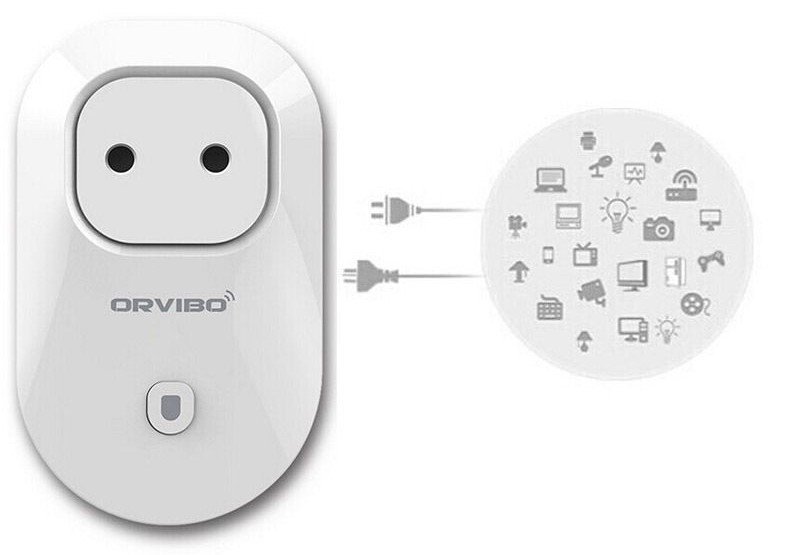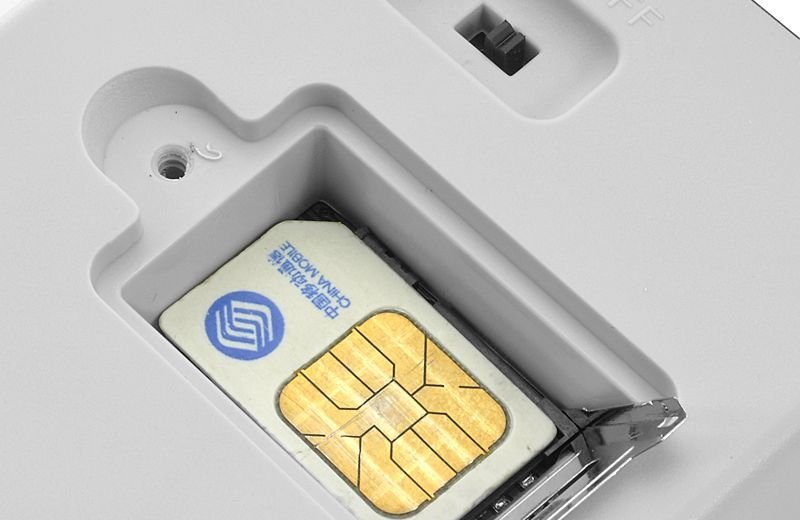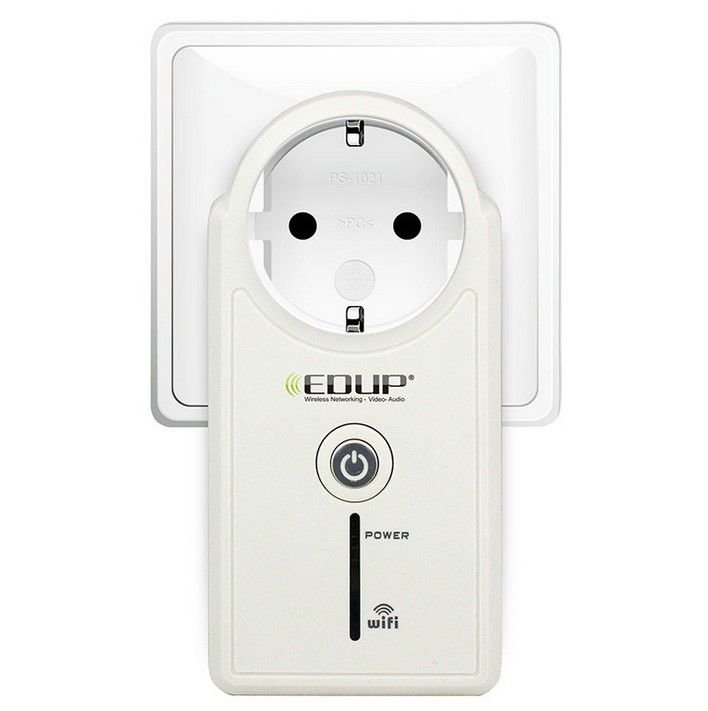Content
- Classification
- Remote Control Design
- Radio controlled device
- Connection
- Scope of application
- GSM sockets
- WiFi sockets
- Remote Control Manufacturers
One of the simplest and at the same time effective ways to control the operation of electrical appliances at a distance is to use a device such as a remote control outlet.

Classification
To date, the choice of a particular model of a socket with remote control should be dictated by the compliance of its technical characteristics with the operating conditions. First of all, we are talking about the power of the device and the maximum range at which it can be controlled.
The most popular types of such devices are:
- Wireless outlet controlled by radio. The cheapest and most practical type. To ensure its operation, a remote control is needed that allows you to turn on or off individual consumers or their groups from a distance of 30 meters.
- GSM socket. It is controlled using a mobile phone, so the distance from which commands can be issued to turn it on or off is practically unlimited. This device does not require a special remote control, however, it cannot be used in areas where the mobile signal is weak or muffled. In addition, such products are currently quite expensive, which is almost their main drawback.
- WiFi sockets. These devices are controlled using a smartphone or laptop via the Internet. The outlet is connected to the control device using a WiFi router. The disadvantages of these models include a fairly high price with a not too wide range of additional functions.
Remote Control Design
It should immediately be noted that the devices in question cannot be fully considered classical power sockets that are equipped with an additional remote control unit.
The remotely controlled models currently on the market are products that look the most like an adapter or a socket with a timer. That is, they are equipped with a standard electric “plug”, which is designed to plug a remotely controlled module into an ordinary power outlet.
The main purpose of this device is to open or close the power circuit to which the appliance is connected. This allows you to control the consumer’s work at a distance, without making any changes to its design or to the power supply device. In fact, the same function is performed by remote control switches, of which a fairly large number are represented on the market. The main difference between these devices is that connecting the outlet is much simpler and does not require interference with the wiring design. This makes it easy to move it from place to place, which is extremely convenient when working with some consumers.

Thus, a remotely controlled outlet is essentially a switching device that, on command from the control panel, opens or closes the electrical circuit.
Radio controlled device
The most common option for remotely controlled devices that are part of the home electrical network today is a socket with a remote control.

In order to ensure reliable transmission of control signals, it uses radio wave transmitters, which allow you to broadcast a signal at a distance of 30-40 meters and are insensitive to interference. Unlike infrared remote controls, their radio wave counterparts provide reliable control reception signal within the declared range even if there is concrete between the source and receiver walls.
As a rule, 9 or 12 V batteries are used to power the remote control. One such power source lasts about a year.
Most models of radio-controlled sockets are supplied in a kit, which includes from 3 to 5 separate devices controlled from one remote control. Accordingly, such a remote control is equipped with buttons, the number of which depends on the maximum possible number of devices connected to it.
Thus, the radio-controlled outlet is the cheapest and at the same time enough effective device designed to turn on and off consumers of electricity on distance.
Connection
Before starting work, the wireless outlet is combined with the remote control, for which it is necessary to press the corresponding buttons on its body and on the remote control itself. At this moment, both devices are interfaced with one another on one of the radio channels available to the remote control; the successful completion of this process is signaled by a light indicator on the socket body.
It should be noted that a theoretically unlimited number can be controlled on the same radio channel devices, the only limiting factor in this regard is the functionality and usability of such system.
Scope of application

Since the purpose of these devices is to provide remote on and off any consumers of electricity, the scope of such outlets seems extremely extensive. An example of their use is:
- Management of lighting systems for apartments, houses, as well as vast external territories.
- Turn on and off pumps and fans.
- Management of garage doors and electric door locks.
- Opening and closing windows or dampers in ventilation systems.
- Remote control of telecommunication systems.

Such a socket allows you to give a command to reboot the equipment in case of software failures.
Benefits of using remotely controlled outlets:
- Significantly increase the convenience of managing remote consumers of electrical energy. This quality is especially valuable for people with disabilities.
- Easy to connect and operate the device. The ability to move it to any place where a standard electrical outlet is installed.
- No need to make changes to the structure of the electrical wiring when installing such a device.
Disadvantages:
- The use of radio waves in some cases can interfere with the operation of devices such as pacemakers or hearing aids. Therefore, before installing the sockets with remote control, you should check them for electromagnetic compatibility with the above devices.
- Additional elements in the design of any electrical network inevitably reduce its reliability. Connecting such switching devices can cause unintentional trips and unexpected switching on of consumers. It is imperative to provide for such an opportunity and take measures to prevent the negative consequences of spontaneous operations.
- The control of most models of remote control sockets is not recommended from a distance of less than 1 meter.
- The installation of radio-controlled sockets in the walls, which are covered with sheet metal, significantly reduces the radius of action of these devices.
When choosing sockets with remote control, you should pay attention to their characteristics that determine the permissible operating conditions and the power of the connected load. So, most models of such devices allow you to connect electrical appliances with power from 1 to 1.5 kW to them, in some In cases of this is not enough, so you should pay attention to more expensive sockets designed for power up to 5 kW
As for operating conditions, remote control sockets are classified by IP (degree of protection of the shell) in the same way as other electrical appliances of this type. For example, the RCS 1044 N socket, which has an IP44 rating, is protected against the ingress of objects larger than 1 mm and splashes falling in any direction. Such characteristics make it possible to use this device on the street.
GSM sockets
These devices are an extremely convenient form of remotely controlled outlets. As their name implies, you can control the operation of such devices using a mobile phone. For this, a slot for installing a SIM card is provided in the GSM socket housing.

A card provided by any of the mobile operators is suitable. Management can be carried out by calling or sending a message (empty or with a specific text). It should be noted that the transfer of control commands to such a socket is not possible from any mobile phone, but only from the one whose SIM card number was previously registered in memory devices. The maximum number of such numbers, as a rule, does not exceed 5 units.

The main advantage that a wireless outlet has is the ability to control its operation from any place where mobile communication is present. Another positive point is the lack of the need to use a remote control, which requires power from a separate battery and, in addition, can be simply lost.
To control the power supply of computers, special modules of GSM sockets are used, which include up to 6 separate connectors. Each of them is assigned a serial number, which allows using the phone to control any device individually or all at the same time.

The disadvantages of GSM outlets include their relatively high price and the need to purchase a SIM card. In addition, it is often impossible to determine the current state using a telephone, that is, it is unclear whether the device is currently on or off.
WiFi sockets
Many modern devices can be controlled using WiFi wireless. An electrical outlet is no exception in this regard.
The main advantage that WiFi sockets have is the ability to control their work using a computer or tablet via the Internet. In addition, such devices are often equipped with timer functions, which are very convenient to configure in a special mobile application.

To connect and configure this product, you must use the driver package that you can completely free to download from the Internet or download from the installation disc included delivery. After installing the application on a smartphone or tablet and connecting the outlet to the home WiFi network, the outlet must be found in the smartphone menu. Then the connection is established between these devices.
You can control the operation of such an outlet both via the Internet and directly via a WiFi connection. However, for this, the smartphone and the socket must be within the range of the router.
The main disadvantage, which significantly limits the popularity of sockets of this type, is their high price with fairly modest functionality.
Despite the possibility of connecting to a computer, such a device cannot be considered an element “smart home” systems, since it does not provide for full integration into an intelligent system management. In addition, almost all models of WiFi outlets produced today are not able to receive and transmit information about connected load, current and voltage, as well as ambient temperature and other data affecting the operation of the system power supply. Accordingly, the installed program cannot make any decisions if these parameters deviate from the norm.
In order to maintain objectivity in the description of these devices, you should still list the additional characteristics that some of their models are equipped with:
- Room temperature control. Upon reaching a certain value, it is possible to independently turn on or off the outlet.
- Timer functions.
- The ability to control the outlet from several separate devices (usually at least 5 users).
- The presence of an autonomous power source that allows you to save the device settings in the event of a power failure.
- Informing the user about the occurrence of emergency situations, such as a sharp increase in temperature or the disappearance (inclusion) of voltage in the network. Thus, additional duplication of the fire alarm can be carried out.
Remote Control Manufacturers
As in many areas of the modern market, the main manufacturers of such devices are Chinese companies. Since the use of remotely controlled outlets is not yet widespread, such eminent European manufacturers as Legrand or Scneider-electric, although they have similar devices in their lineup, but still rely on more traditional and popular technical solutions.
At the same time, technologies for the manufacture of household electrical devices are developing very rapidly, so that soon we should expect to appear on the market reliable, functional and inexpensive devices that allow not only remote, but also centralized control of the operation of all elements of the electrical wiring.
Thus, the use of remotely controlled outlets can greatly simplify the operation of individual consumers of electricity, as well as their groups. However, the installation of such devices should be carefully considered, their use is justified only in cases where manual the inclusion of electrical appliances is very difficult for some reason or there is a need to control their work on significant distances.


